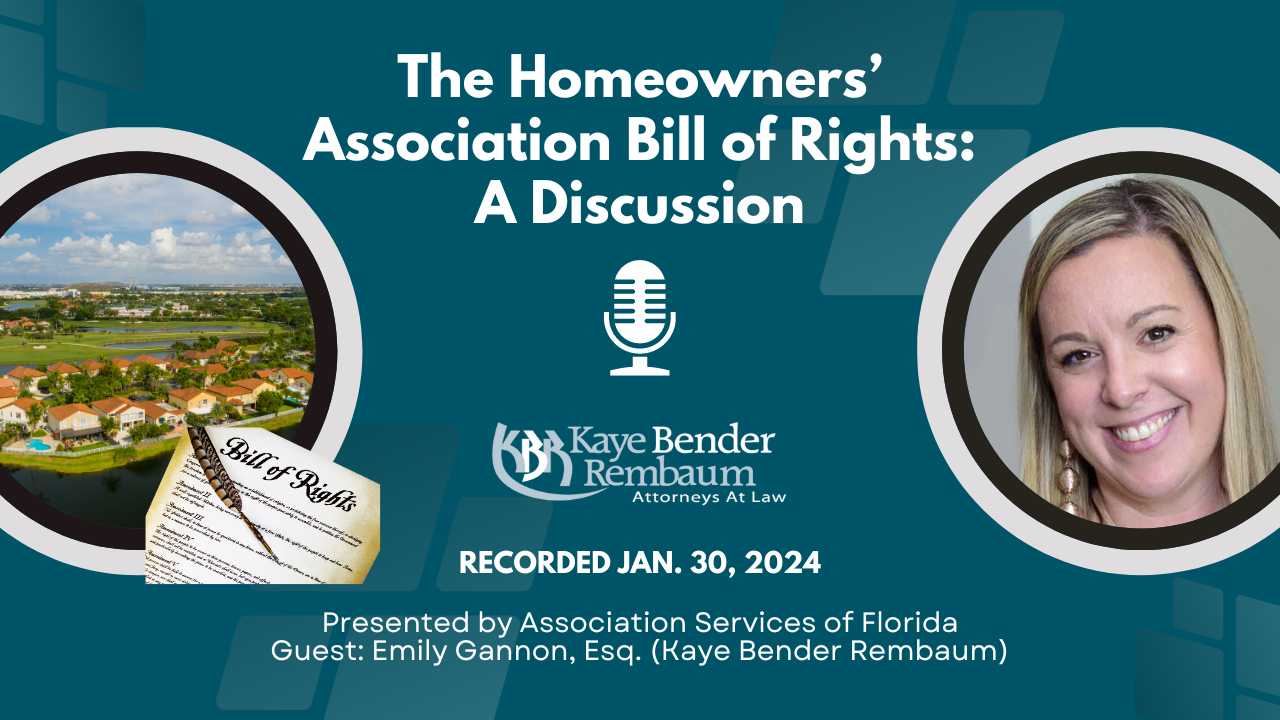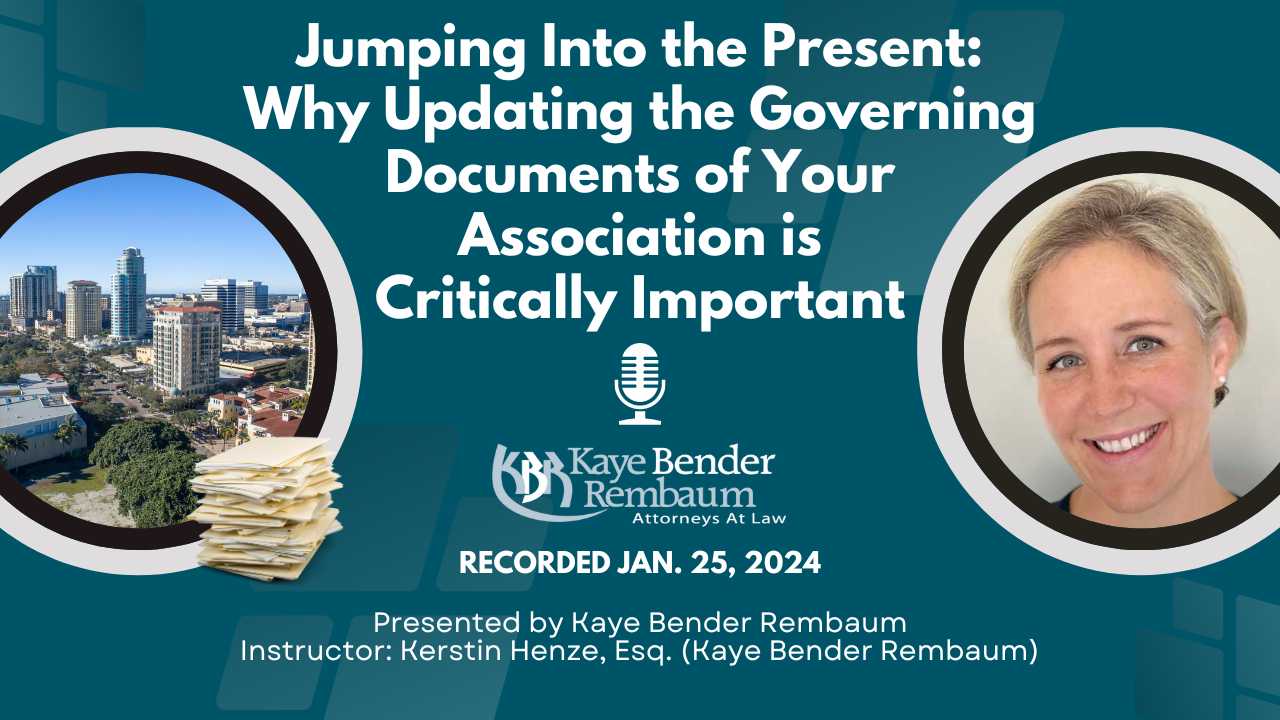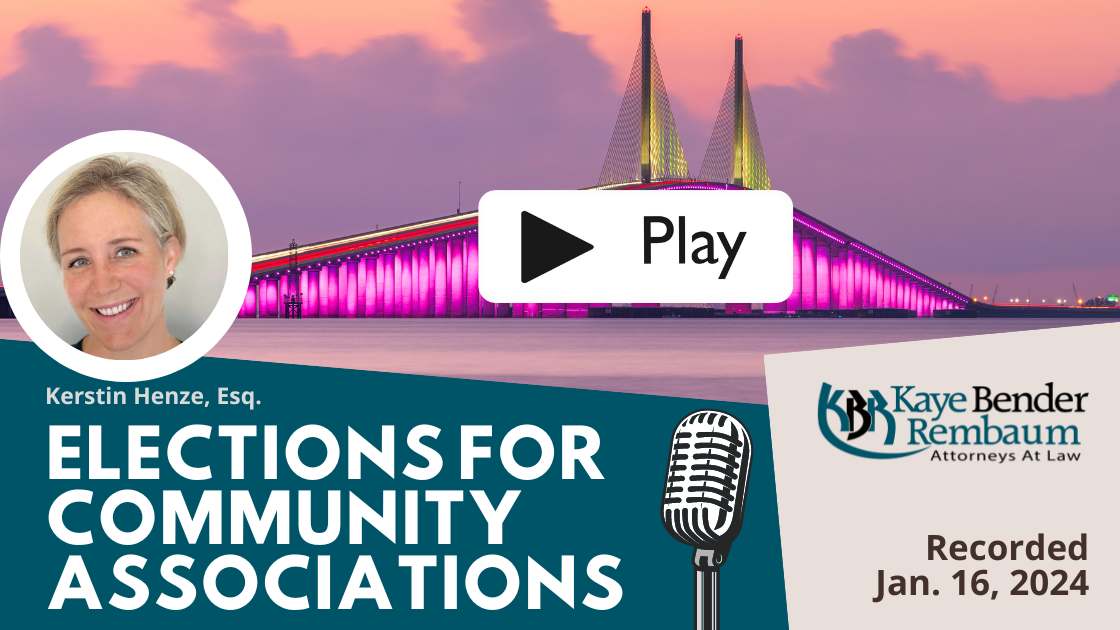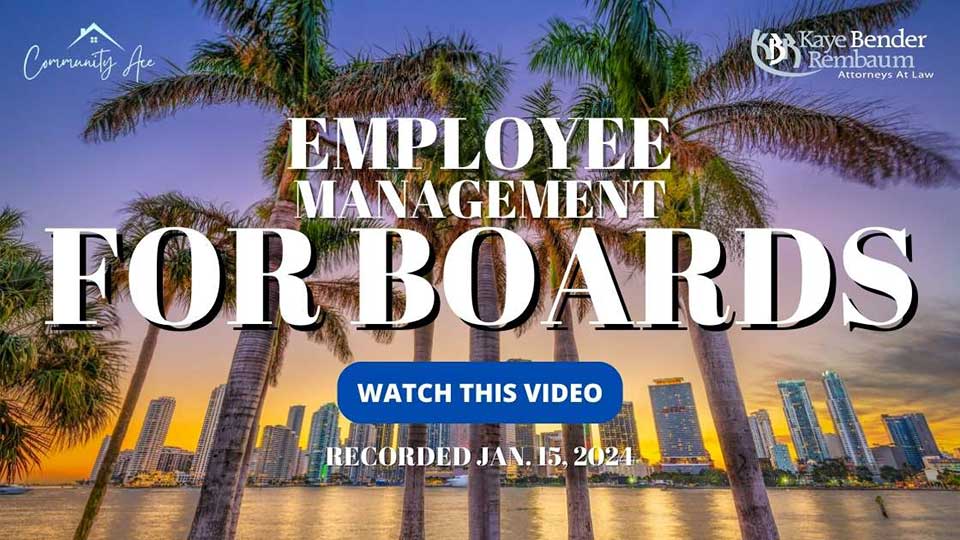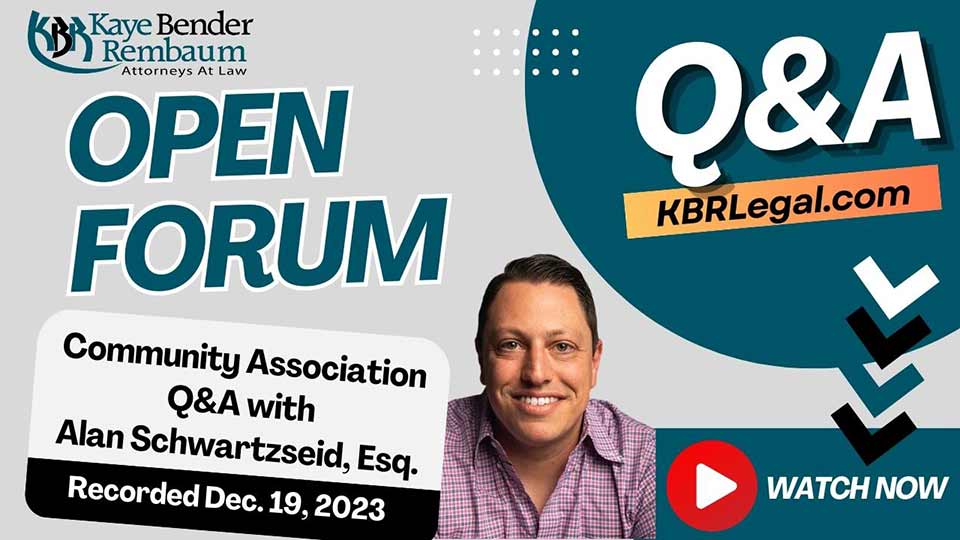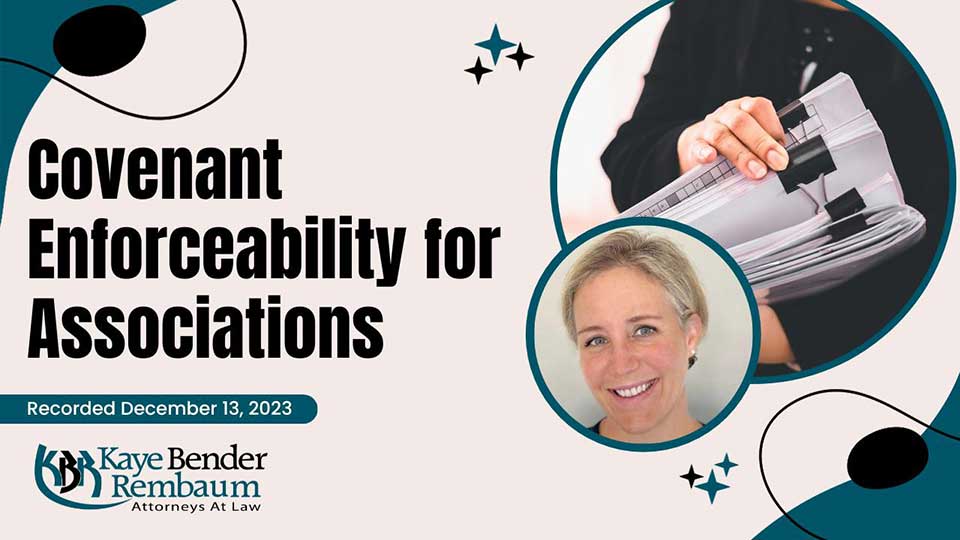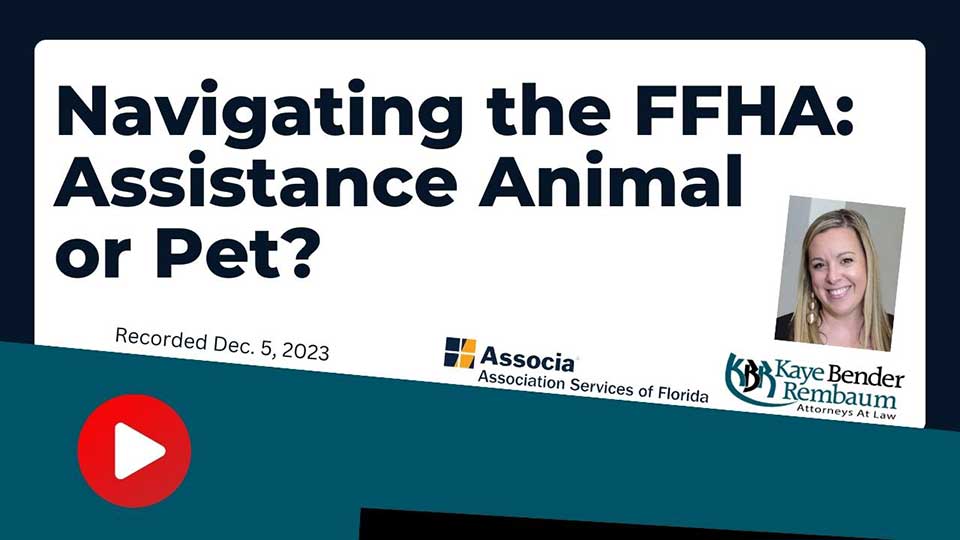**Important** Viewing this on-demand video WILL NOT satisfy Florida state requirements for new Board Members; NOR will this recorded version offer CEUs for CAMS. It is for informational purposes only and is not to be considered as legal advice. Should you have any questions, contact your association counsel.
This webinar, presented by Association Services of Florida, provides an overview of a portion of recently passed legislation known as the “Homeowners’ Association Bill of Rights”. Panel includes Gerardo Alpizar (Associa Florida) and Emily E. Gannon, Esq. (Kaye Bender Rembaum).
They will discuss: Meeting Agendas; Usage of Members’ Email Addresses; Monetary Deposits; “Kickbacks”; Illegal Association Activities performed by Boards and Managers; Conflicts of Interest; Violations and Fines Notice Requirements; Criminal Prohibitions

